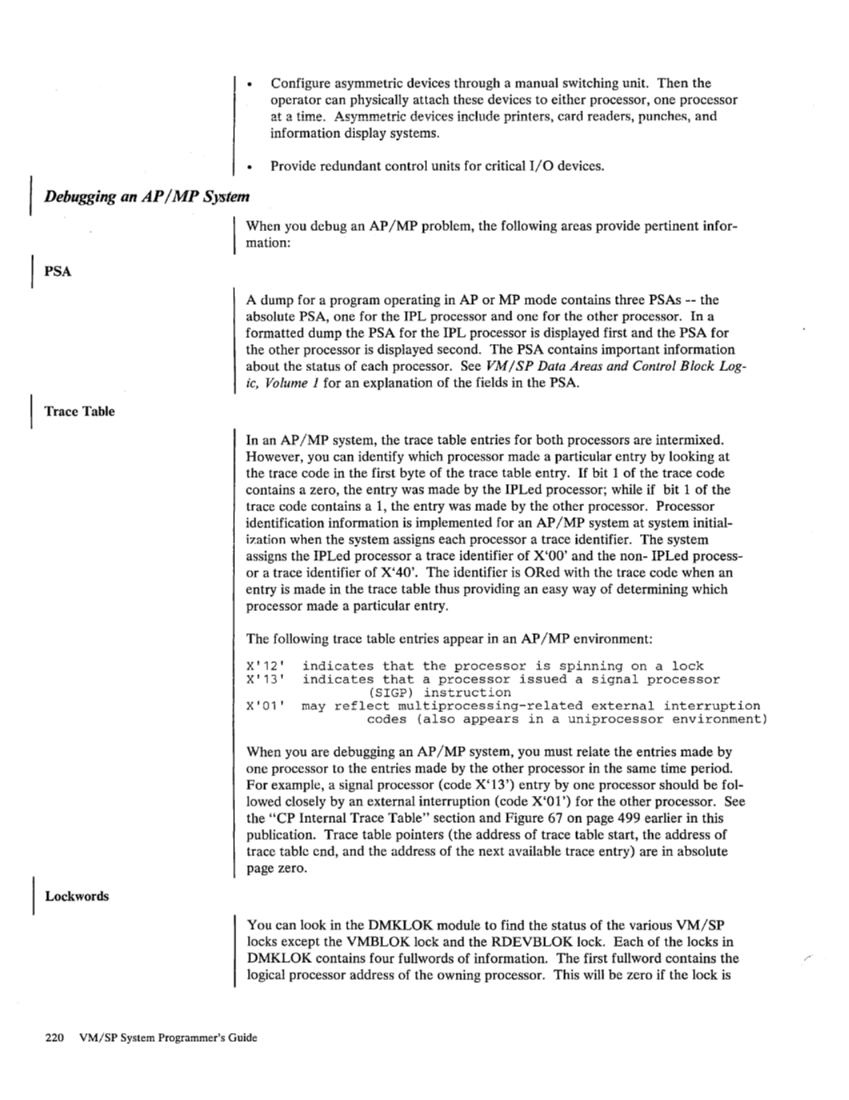Routines that must lock a virtual machine other than the current virtual machine
use the SWTCHVM macro. The SWTCHVM macro unlocks the
fied in register 11 and locks the
also switched. The format of the SWTCHVM macro is:
SWTCHVM
label is any desired label
STAY indicates that if the
be stacked for the current processor.
shared segments.
to point to
charging supervisor time to the new
either of the other options.
Configuring and Debugging MP Systems
for an MP system and when debugging an AP /MP System.
Configuring I/O Devices for an MP System
When you configure
The possibility of a hardware failure
Smooth transition when you reconfigure between MP and uniprocessor (UP)
modes for maintenance.
In either of these cases to ensure maximum system availability, you should provide
paths from both processors to
Configure symmetrically as many channels and
Install channel-switching and string-switching features on control units where
possible. A channel switch is a feature on a control unit that enables two real
processors to share a symmetric device. A symmetric device is a device that
can be accessed by both processors, while an asymmetric device cannot be
shared. A string switch enables you to attach a symmetric
separate control units. These features provide access to
processors. This increased access reduces the possible loss of access to critical



































































































































































































































































































































































































































































































































































































































